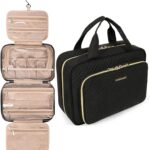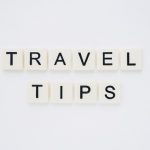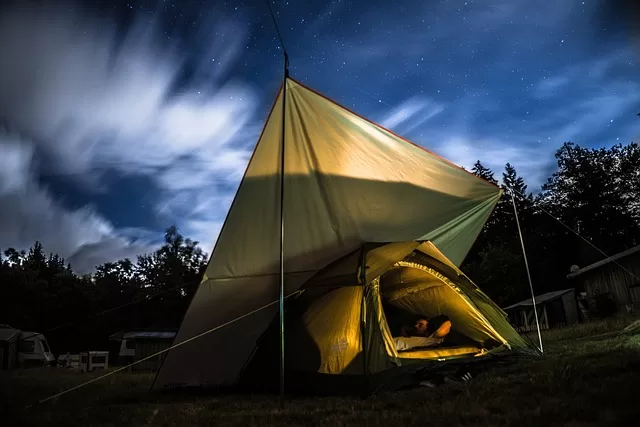Before planning a road trip, you probably already know that road trips can be an exciting adventure full of possibilities and new experiences or you may also be wondering what lies ahead as a newbie. This worry of how to avoid getting lost and stay on track on your road trip could be what births the need to find how to avoid getting lost and stay on track on your road trip. Though road trips are fun, however, the reality is that getting lost or straying from your planned route can quickly turn a great adventure into a frustrating and stressful experience.
The last thing you want is to spend your road trip feeling lost, disorientated, and anxious. That’s why it’s important to take measures to stay on track and avoid getting lost especially when going on a new route.
On that note, here we have explored some of the best tips and strategies to keep you on the right path, from planning your route ahead of time to using GPS navigation systems and road signs, taking breaks, and staying alert. If you implement these techniques, you can be sure that your road trip will be a smooth and stress-free experience even for a first-time road-tripper, allowing you to make the most of your journey and create memories that will last a lifetime.
Plan Your Route Ahead of Time
One of the first tips to avoid getting lost and staying on track on your road trip is planning your route ahead of time. Now, I know some of you might think it’s more fun to just wing it and see where the road takes you, but trust me, it’s better to have at least a general idea of where you’re going or know how to properly plan your road trip itinerary.
The Benefits of Planning Your Route
Do you know that planning your route has a ton of benefits? asides helping you avoid getting lost and stay on track on your road trip, others include helping you estimate how long the trip will take, ensuring that you have enough fuel and supplies, and even saving you money by identifying the most efficient route. additionally, it helps you avoid the stress of trying to figure out where to go while you’re driving, which can be a major cause of arguments and tension.
How To Plan Your Route
So, how do you plan your route? There are a few different methods and things to put into consideration and use to plan your route:
Using a Map, GPS, or an Online Tool like Google Maps
Paper Map You can use a good old-fashioned paper map, which can be a fun way to engage with your trip and get a better sense of the area. Or, you can use a GPS device, which is super convenient and can give you real-time updates on traffic and route changes. You can also use an online tool like Google Maps to plan your route in advance and even see photos and reviews of attractions and restaurants along the way.
Identifying Major Landmarks, Highways, and Turn-offs
No matter what method you choose, make sure you identify major landmarks, highways, and turn-offs along your route.
Considering Alternate Routes in Case of Delays
And, just in case of unexpected delays or closures, consider alternate routes that you can take to get back on track.
Researching Attractions, Restaurants, and Accommodations
Lastly, do some research on the attractions, restaurants, and accommodations you’ll encounter along the way so you can plan your stops accordingly. Decide on whether you will like to go for unique road trip accommodations and pack up some healthy road trip snacks and meals. Trust me, planning your route ahead of time will make your road trip so much smoother and enjoyable.
Whether you prefer a portable device, smartphone app, or in-car system, a GPS navigation system can make all the difference in helping you stay on track and avoid getting lost on your road trip.
Now, I know some of you may prefer the traditional methods of using a map or asking for directions, but let me tell you, a GPS can be a lifesaver when you’re in unfamiliar territory.
Having a GPS navigation system can be incredibly helpful in providing turn-by-turn directions and real-time traffic updates.
Some
From using a GPS device to downloading and testing and keeping it charged to make sure it keeps you right on your track.
Portable Devices, Smartphone Apps, and In-car Systems
You can use portable devices like Garmin or TomTom, or smartphone apps like Google Maps or Waze. Some newer cars even come equipped with GPS systems built into the dash, which can be super convenient.
Downloading or Updating the Latest Maps
One thing to keep in mind is to make sure you download or update the latest maps for your GPS. This will ensure that you have the most up-to-date information on roads, traffic, and new developments along your route.
Keeping the GPS Charged and Within Reach
And, of course, you’ll want to keep the GPS charged and within reach at all times. Make sure to bring a car charger and keep the GPS device or smartphone mount within sight and easy to reach.
Testing the GPS
And remember to test the GPS before hitting the road to ensure it’s working properly.
Use Road Signs and Landmarks
Another tip for avoiding getting lost and staying on track on your road trip is to use road signs and landmarks. Now, I know what you’re thinking, “But wait, didn’t we just talk about the importance of a GPS?” Yes, we did, but hear me out. While GPS can be super helpful, it’s always a good idea to have a backup plan in case the technology fails or you lose the signal.
Using road signs and landmarks as visual cues can be a great way to supplement your GPS navigation and help you stay on track. Plus, it can be a fun way to engage with the landscape and appreciate the unique features of the area you’re traveling through.
How to Use Road Signs and Landmarks
So, how can you use road signs and landmarks to your advantage? Well, here are some of the ways to use roadsigns and landmarks:
Use Road Signs and Landmarks as Cues
First off, try not to rely solely on your GPS. Instead, use road signs and landmarks as visual cues to help keep you on track. Signs indicating major highways, towns, and cities can be especially helpful in guiding you along your route. And, don’t forget about major landmarks such as mountains, rivers, or distinctive buildings that you can use to orient yourself.
Keep an Eye Out for Major Intersections
It’s a good idea to keep an eye out for major intersections, exits, and rest areas as well. If you know you need to take a certain exit, for example, keep an eye out for signs indicating that it’s coming up. And if you’re traveling through a city, look for street signs and try to get a general sense of the layout before you start driving.
Take Breaks and Stay Alert
So here is another tip for avoiding getting lost and staying on track on your road trip: take breaks and stay alert. Now, driving for long periods can be tiring and even dangerous if you’re not careful. That’s why it’s essential to take regular breaks to refresh your mind and stretch your legs.
What to Do When Taking Breaks
Taking breaks and staying alert can help you avoid getting lost and stay on track on your road trip. So, make sure to take care of yourself and take regular breaks to keep your mind and body sharp. Here are some things to do when you take breaks:
- When you take breaks, it’s essential to drink plenty of water, snack on healthy foods, and get enough restful sleep each night. Staying hydrated and fueled up with nutritious foods can help you stay alert and focused on the road.
- It’s not just about food and water. It’s also important to take breaks to give your mind and body a rest. Get out of the car, take a short walk, and stretch your legs. You can also use this time to explore nearby attractions or take in the local scenery. You never know what hidden gems you might discover!
- One thing to keep in mind is that driving while fatigued can be just as dangerous as driving under the influence of drugs or alcohol. So, if you’re feeling tired, it’s crucial to take a break and rest before continuing on your journey. You’ll arrive at your destination feeling more energized and refreshed, and you’ll also be a safer driver.
Use Mobile Apps
Another tip for avoiding getting lost and staying on track on your road trip is to use mobile apps. These days, there are tons of road trip apps and tools like Google maps available that can help you plan and navigate your routes.
Benefits of Using Mobile Apps
Using mobile apps can be a great way to supplement your navigation and help you find all the things you need to make your road trip more enjoyable. So, download a few apps and see how they can enhance your travel experience. Here are some of the benefits of using mobile apps
- First, you can use them to find gas stations, restaurants, and attractions along your route. This can be super helpful if you’re running low on gas or looking for a place to grab a bite to eat.
- It can also be a great way to discover new and exciting places that you might not have found otherwise.
Apps for Staying on Track
GasBuddy and Yelp
Two apps that are particularly useful for road trippers are GasBuddy and Yelp. GasBuddy can help you find the cheapest gas prices along your route, while Yelp can help you find restaurants, hotels, and attractions that have been reviewed by other travelers.
Roadtrippers
Another great app to check out is Roadtrippers, which can help you plan your route and find interesting places to stop along the way. You can use it to find everything from quirky roadside attractions to national parks and scenic drives.
Of course, there are tons of other apps out there that can be useful for road trippers, so don’t be afraid to do some research and find the ones that work best for you.
Communicate and Ask for Help
Communicating and asking for help is one of the best tips for avoiding getting lost and staying on track on your road trip. When you’re on the road, it’s important to remember that you don’t have to go it alone.
Things to keep in Mind When Communicating and Asking for Help
There are certain things to keep in mind and some of them include:
- Making sure that you’re communicating effectively with your travel companions. This can mean checking in regularly to make sure everyone is on the same page about where you’re going and when you’ll get there.
- It can also mean discussing alternate routes and backup plans in case of unexpected delays or road closures.
- If you do find yourself lost or off-track, don’t be afraid to ask for help. Locals and other travelers are often more than happy to offer directions or recommendations for places to eat or stay. You can stop at a gas station or convenience store and ask for directions, or even just roll down your window and ask someone on the street.
- If you’re feeling unsure about the best route to get back on track, consider using a map or GPS to help you identify your location and figure out the best way to reach your destination.
- And don’t forget to trust your instincts – if something doesn’t feel right, it’s always better to err on the side of caution.
- In the end, remember that communication and teamwork are key to a successful road trip. By working together and being willing to ask for help when you need it, you can avoid getting lost and make the most of your adventure on the open road.
Conclusion
There’s no denying that a road trip is one of the best ways to explore new places and create unforgettable memories. However, you must have certain things in place to avoid getting lost and stay on track on your road trip. This is because getting lost and feeling disoriented can quickly turn your trip into a frustrating and stressful experience.
I hope these tips will be helpful enough to help you avoid getting lost and stay on track during your road trip. From planning your route ahead of time to taking breaks, using mobile apps, and communicating with others, these are strategies that will help ensure that you make the most of your journey and arrive at your destination safely and with a smile on your face.
So, whether you’re embarking on a cross-country adventure or ticking one of the best road trip itineraries for the long weekend off your list, take the time to plan and prepare ahead of time, and use the tips we’ve shared to stay on track and have a road trip that you’ll cherish for years to come.



























